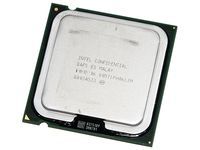Power-Saving Motherboards: Fact Or Fiction?
Efficiency Testing Basics
This review doesn’t aim to find the best performer or overclocker, but to determine the motherboard that provides the best mix of performance and power savings in typical desktop/office environments.
Benchmarks
We use SYSmark 2007 Preview for this test, because it offers good insight into application performance for popular software titles. We avoided other benchmarks for several reasons:
- CPU-intensive workloads, such as audio/video transcoding or rendering, would put the system into a processor peak power state without showing much difference in processor performance. We’re more interested in peak and idle power, and in creating a performance profile over time using a defined workload. Hence we use Prime95 to assess peak power, neglecting peak power at high graphics loads as well.
- The most attractive games require decent 3D performance, which means we’d have to add 30 W to 80 W idle power, depending on the graphics card used. However, the greater the load, the less you notice the power-saving features.
- Most gamers accept high power requirements as a given, so no need to run tests using graphics or game benchmarks.
Components

Clearly, efficient PCs must be based on reasonable components. The processor we choose for this test is a Core 2 Duo E7200 (Wolfdale core with 3 MB L2 cache). It’s a low-end Core 2 processor that runs on FSB1066 speed and 2.53 GHz core clock speed, but it’s one of the most efficient Core 2 models on the market, offering mainstream performance with low power requirements.
All systems run on two 2 GB DDR2 modules. However, the ASRock P45R2000-WiFi can also operate with DDR3 memory, which we tried using four 1 GB DDR3 DIMMs to compare power consumption. Performance doesn’t differ much between DDR2 and DDR3 memory. On the graphics side we decided to use a Radeon HD 4850 card by GeCube. These models provide solid performance and make acceptable power demands. The power supply is a Cooler Master RS-850-EMBA and we use a Seagate Barracuda 7200.11 500-GB drive.
We Test the Motherboard Makers’ Special Features—Only!
Stay on the Cutting Edge
Join the experts who read Tom's Hardware for the inside track on enthusiast PC tech news — and have for over 25 years. We'll send breaking news and in-depth reviews of CPUs, GPUs, AI, maker hardware and more straight to your inbox.
Our test methodology doesn’t reflect motherboard makers’ promises of 40 percent power savings or more, but you can find those on just about every manufacturer’s Web site. The reason is simple: we decided to run the test systems with hardware power saving features, such as Enhanced Intel SpeedStep and all C-states enabled (available on virtually any LGA775 motherboard today), and compare the power-requirement results with the results obtained once we activated the power-saving mechanisms praised by their inventors. The motherboard makers typically are bold enough to compare the results based on their features with the worst possible idle power conditions, which means switching off all processor and platform power-saving options. These are offered by Intel hardware and aren’t part of the motherboard makers’ features.
In all cases, when we flash the motherboards using the latest BIOS version officially available and check the BIOS settings, all on-board devices except the floppy controller remain enabled. Benchmark results are collected with all power-saving options enabled; this means the most appropriate built-in power-saving setting in the motherboard as well as all processor power-saving features are enabled.
Current page: Efficiency Testing Basics
Prev Page The P45 Efficiency Battle Next Page ASRock P45R2000-WiFi: No Special Power-Saving FeatureMost Popular

